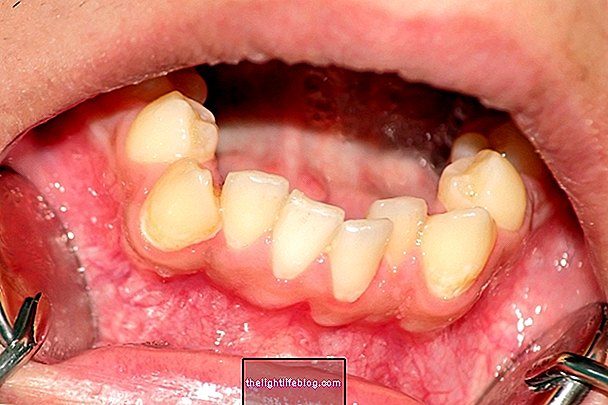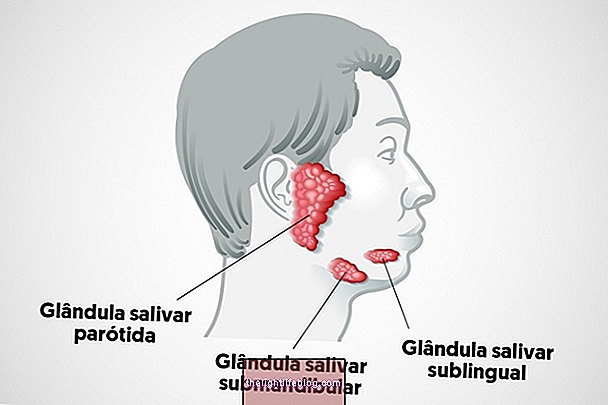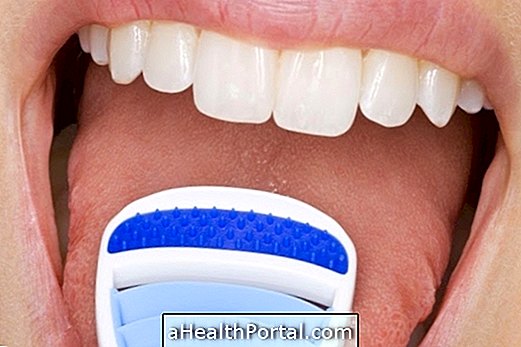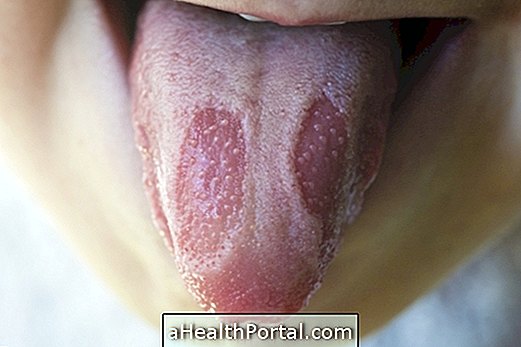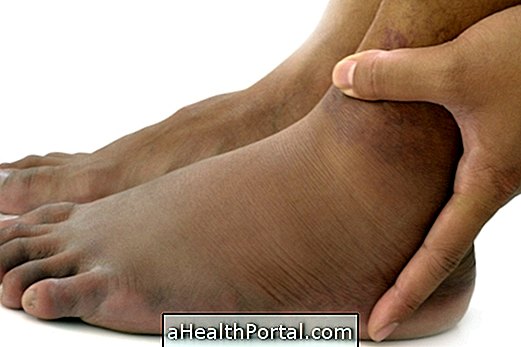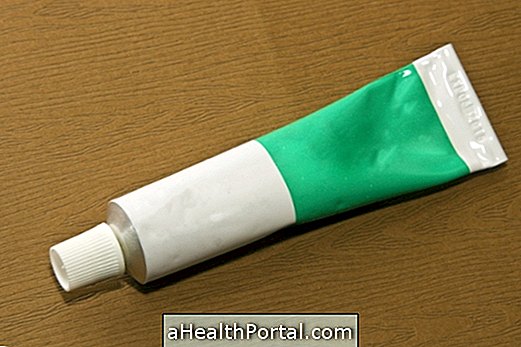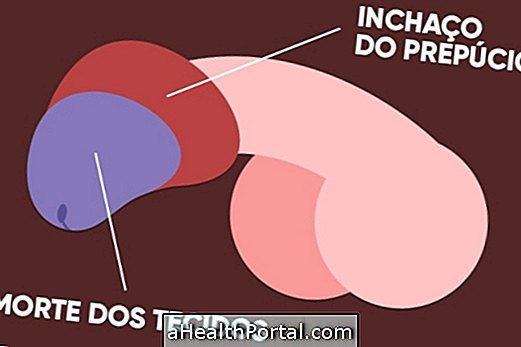Gingival retraction, also known as gingival recession or retracted gingiva, occurs when there is a decrease in the amount of gingiva that covers the tooth, leaving it more exposed and apparently longer. It can happen only in one tooth or in several at the same time.
This problem appears slowly, but worsens over time, and if it is not treated when the first signs appear, it can have serious consequences, which can cause an infection or even lead to loss of the tooth and damage to the bone and tissue of the tooth. jaw.

How the treatment is done
Gingival retraction is curable, or can be controlled if it is well treated when the first symptoms appear. Eating a balanced diet, quitting smoking or removing piercings that may be the cause of the problem are easy measures that can solve it. In addition, it is important to brush your teeth more correctly, less aggressively, with a soft brush, at least twice a day, along with flossing every day. Here's how to brush your teeth properly.
Even so, as soon as the first signs and symptoms appear, a dentist should be consulted, who can advise the best treatment, depending on the cause and severity of the gingival retraction:
- Infection: the dentist, in addition to treating the problem, can also prescribe a mouthwash, gel or an antiseptic paste;
- Tartar accumulation: dental cleaning must be done at the dentist;
- Periodontitis: scaling and root planing should be done;
- Misplaced teeth: correct with the use of a dental appliance in order to align them;
- Use of drugs that cause dry mouth: Check with your doctor if there is another drug with fewer side effects or use a product to reduce dry mouth.
Normally, due to the exposure of the root of the tooth, tooth sensitivity may occur, and this problem should also be treated. Usually, the use of mouthwash and specific toothpastes can reduce tooth sensitivity. If these measures are not enough, you can choose to apply fluoride, or even resort to treatment with resin, which consists of restoring the tooth with acrylic resin in order to cover the exposed sensitive areas. Learn more about how to treat tooth sensitivity.
When it is necessary to have gingival surgery
In more severe cases, the dentist may suggest a gingival surgery that consists of covering the exposed portion of the root of the tooth, repositioning the gum or using a tissue graft made, usually of gum removed from the roof of the mouth.
The success of the surgery depends on the severity of the problem, as well as the person's age, healing capacity, gum thickness, and other factors such as cigarette consumption and oral hygiene habits.
Homemade treatment for gingival retraction
Since gingival retraction is caused by several causes that damage the gums, it can be mitigated or prevented with the following home remedies:
1. Oral myrrh of myrrh
The myrrh's antimicrobial and astringent properties help to kill bacteria and protect the gum tissue, and can therefore help to prevent the emergence of retracted gums.
Ingredients
- 125 ml of warm water;
- 1/4 teaspoon of sea salt;
- 1/4 teaspoon of myrrh extract.
Preparation mode
Mix the ingredients and after cleaning the teeth use 60 ml to rinse thoroughly.
2. Oral salve elixir
Daily mouthwashes with a solution of sage tea and sea salt help prevent gum disease. Both are antiseptic, relieve inflammation and promote healing. As they are astringent they also help to tone the gingival tissue.
Ingredients
- 250 ml of boiling water;
- 2 teaspoons of dry sage;
- 1/2 teaspoons of sea salt.
Preparation mode
Turn the water over the sage, cover and let stand for 15 minutes. Strain and add the sea salt and let it warm. Use about 60 ml and rinse thoroughly after cleaning the teeth. Use within 2 days.
3. Hydrate paste
This paste of hydraste and myrrh exerts an intense curative action on inflamed gums, being a good option if the retracted gums are also red and inflamed.
Ingredients
- Myrrh extract;
- Hydraste powder;
- Sterile gauze.
Preparation mode
Mix a few drops of myrrh extract with hydraste powder to make a thick paste. Wrap in sterile gauze and place over the affected area for one hour. Repeat twice a day.

What are the possible causes
Gingival retraction can occur at any age and in healthy mouths, and can be caused by different factors, such as:
- Infection of the gums;
- Bad dental positioning;
- Tartar build-up on teeth;
- Heredity, with no apparent cause;
- Injuries caused by brushing your teeth too hard or using very hard brushes;
- Periodontal disease, which can happen due to poor oral hygiene;
- Hormonal changes in women;
- Use of piercings in the mouth that can cause lesions in the gums;
- Weakening of the immune system due to leukemia, AIDS or treatments like chemotherapy, for example;
- Use of drugs that make the mouth drier;
- Dental procedures, such as prosthesis application, teeth whitening or dental appliance application;
- Bruxism, which is a grinding or a strong clenching of the teeth, leading to wear and destruction of the gum tissue.
In addition, gingival retraction is more common with advancing age or in people who smoke, who have diabetes or who eat poorly.
It is important to go to the dentist regularly in order to detect the first signs of gingival retraction in order to prevent its evolution.
Symptoms of gingival retraction
In addition to observing a gum shrinkage that exposes the tooth more and makes the base more yellow, symptoms of gingival retraction may also include bleeding gums after brushing or flossing, increased tooth sensitivity, red gums , bad breath, pain in teeth and gums and, in more severe cases, loss of teeth.
Was this information helpful?
Yes No
Your opinion is important! Write here how we can improve our text:
Any questions? Click here to be answered.
Email in which you want to receive a reply:
Check the confirmation email we sent you.
Your name:
Reason for visit:
--- Choose your reason --- DiseaseLive betterHelp another personGain knowledge
Are you a health professional?
NoMedicalPharmaceuticalsNurseNutritionistBiomedicalPhysiotherapistBeauticianOther
